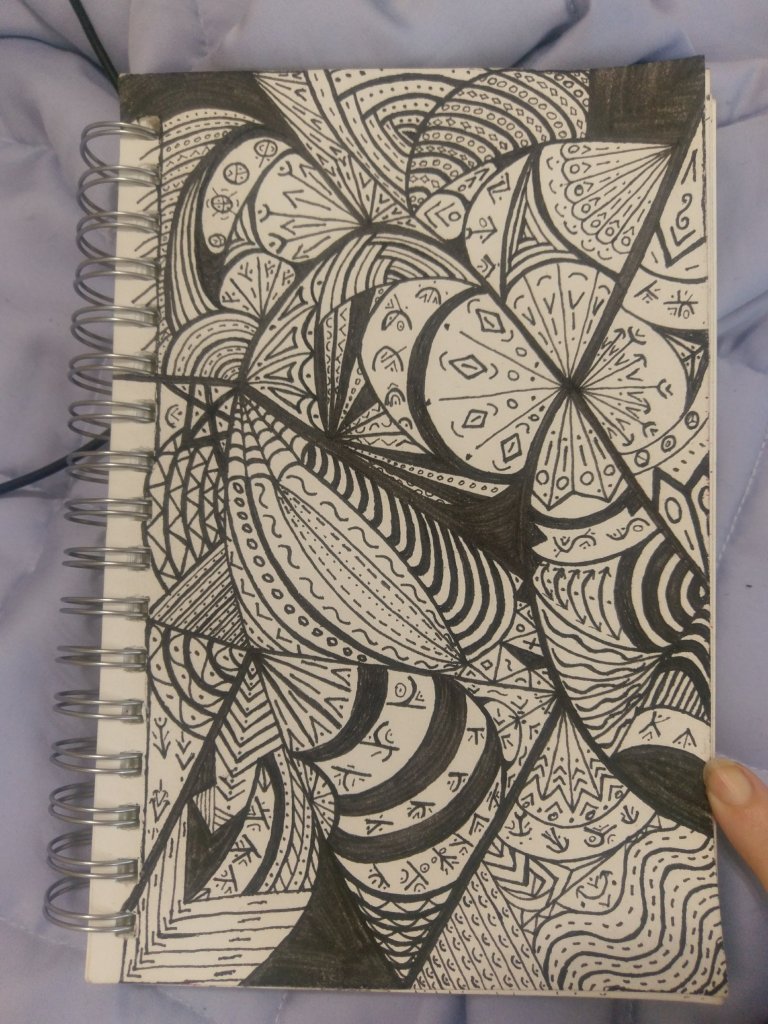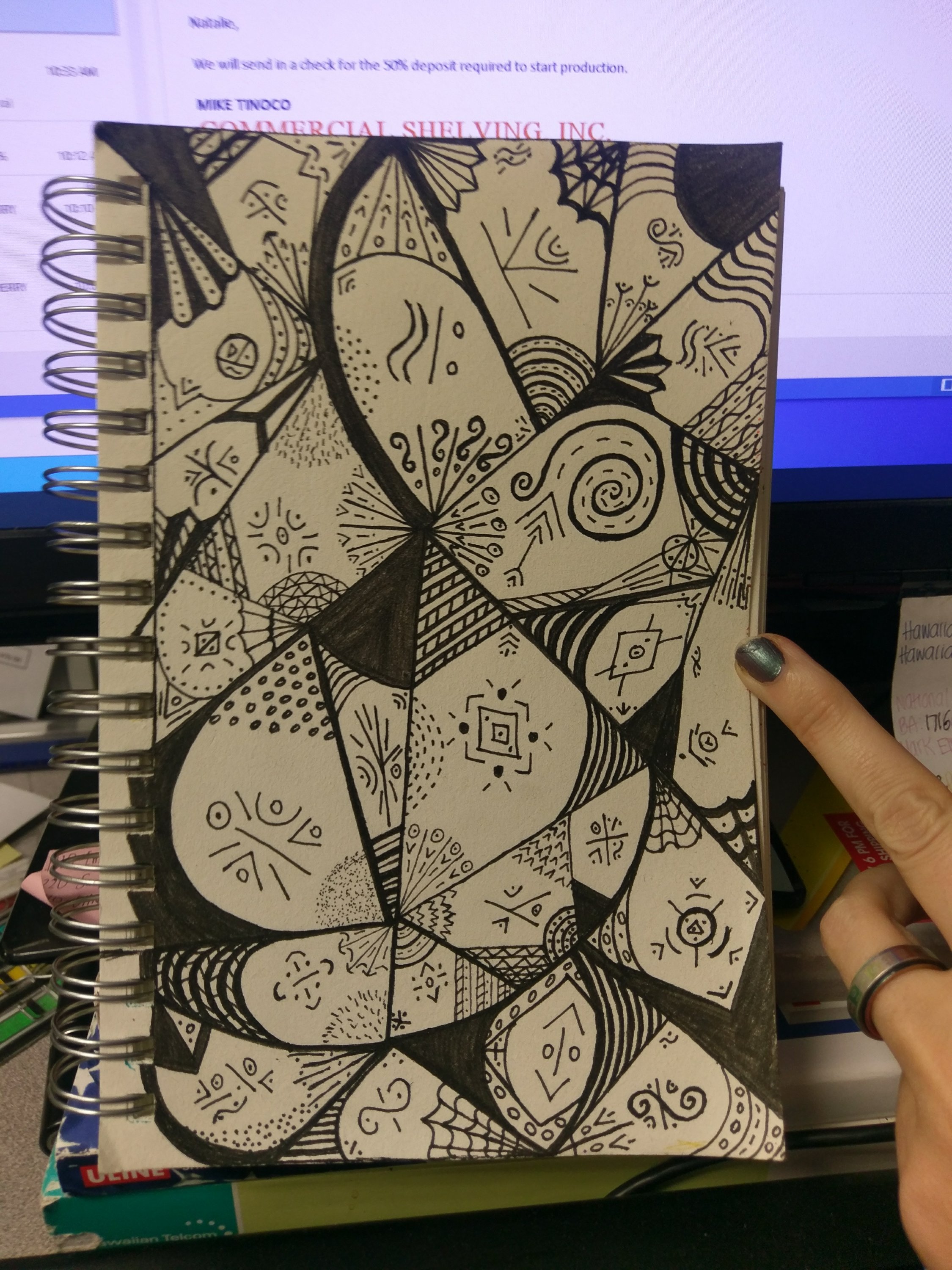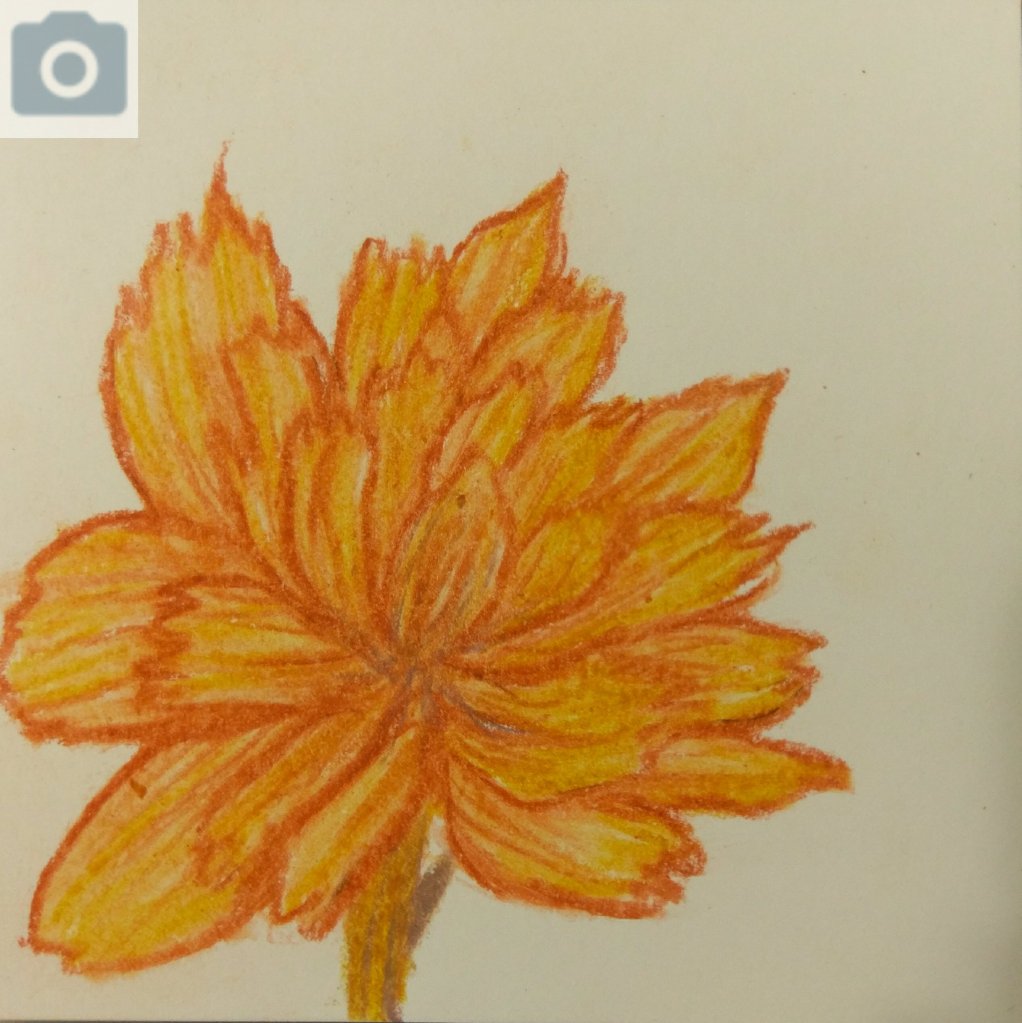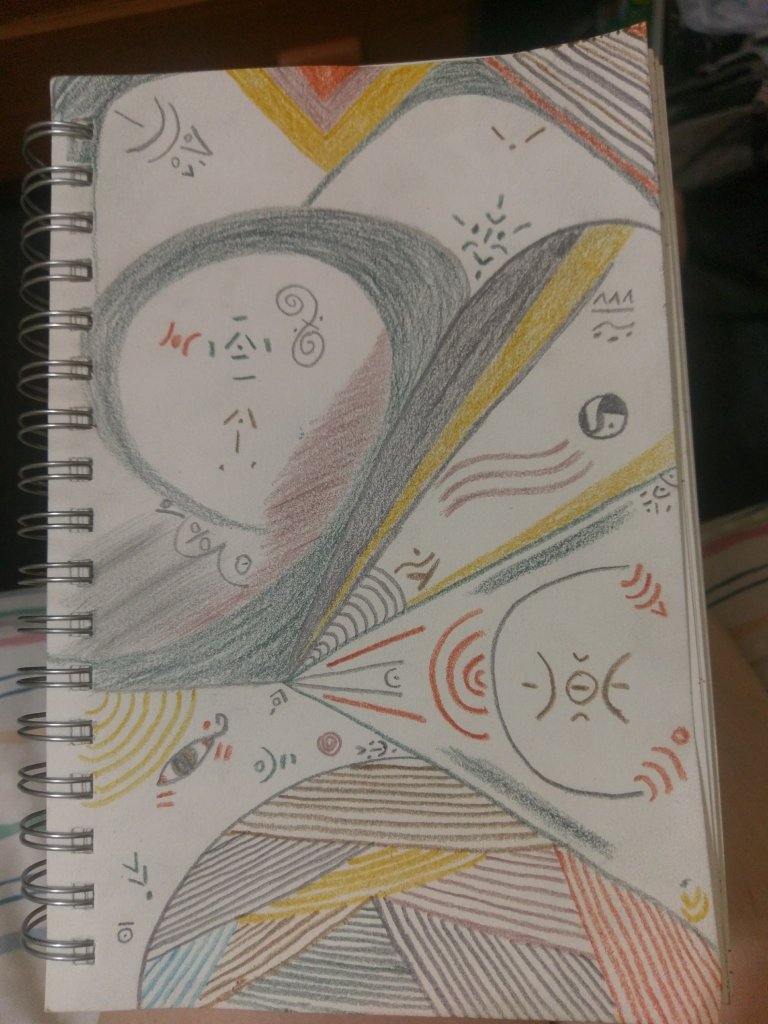












The world through my glasses today is distant and like clouded glass. I feel like I am interacting with everything from a distance, not really in my body. It feels like exhaustion but not exactly. It is almost like the mask slipped and I can see it. Motivation has been a challenge for a while as I struggle with depression and loneliness. I feel like the end goal is not in sight and I don’t know why I am doing anything. Being here, where I choose to be helps me keep going knowing eventually I will find a window to something. In the meantime I struggle with simple tasks. Being in groups is hard. I can’t separate the background noise and voices from those at my table and I must closely watch someone’s face to hear what they say and understand it. Processing reactions and emotions and understanding why they are reacting the way they are is exhausting. I need the social interaction but is so much work to deal with the people, lights, colors, sounds, smells, and activity around me. Without my training in how to move and read people from modeling and communication classes I would not be able to handle it. Pain is a constant mild presence but some of it is more numb or pressure than pain, but maybe that is just long term tolerance of it. Depression runs in cycles, some low and some high. When I think about my body I think about things I want to change, like hair or teeth, or breasts. But when I think about life my mind shies away not sure where to focus. Small details take up each moment and focus the mind away from the clawing fear of being alone until I can rebuild the mask that hides it from the world. I find that my mask is so good even the psychiatrist doesn’t see thee pain unless I force myself to tell him and try to explain. Every few minutes I clean my glasses or hands trying to breach the distance and feel the world. A cup of coffee gone and no real memory of drinking it. Soft new clothes feel good on my skin and distract my mind again. It feels like I will never move forward and never have a life worth living. My mind wonders if my husband will ever be in the same state as me and if he does do so can we get by financially together. Work is quiet and cold and I struggle to interpret interactions and know if the comment was insult, humor, or statement. I simply let it go, distance, it doesn’t matter.
—–
Another week I will do all the little things he does to take care of me for myself.
Another week i won’t feel his touch.
Another week I won’t see his eyes.
Finding myself watching life.
Finding myself hiding myself.
Just sitting at the desk.
Maybe learning a new art.
Maybe trying a new experience.
Maybe going somewhere new.
Purpose lost.
Purpose drowning.
Purpose only to have him here.
Silent about my work.
Silent in my dreaming.
Very tired with no sleep.
Very alone surrounded by people.
Zone into my art.
Another week alone.
—-
Another week without his support.
Falling quietly apart.
Gaining ground and building strength.
Just me for meals I cook alone.
Many distractions to fill the time.
Sitting at my desk with nothing to do.
Trouble with the crowds he would keep away.
Visiting places to tell him about.
Writing on my lunch I eat alone.
I am a reader. I always have been a reader. But my choice of books was highly restricted. I read everything I was allowed multiple times, even the encyclopedias and dictionaries. But once my options opened when I left their home, I realized that despite the apparent attempts at a good education I was woefully lacking in knowledge, experience, and variety. I began to read a wide variety of books and materials and continue that to this day.
Rarely did I do anything truly deserving of punishment because I had a very clear understanding of the consequence and reward ratio. I felt I had a hard enough time without adding extra issues for limited reward. Of course, that means when I did choose to do something the punishment was fairly pointless because I knew what it would be and chose to act anyway. I had already determined the risk to reward ratio was in my favor.
Conversations were hard because we shared nothing in common other than classes and those were mostly boring and too easy so I didn’t really pay attention. At some point there was always the risk conversation would veer toward my mother and her cancer, which was not something I wanted to discuss. Religious people would imply either that they were praying which was obviously not working or that if she actually had faith she would not be sick. The added issue that she was a test patient because we couldn’t afford treatment much less any extras or luxuries. I absolutely was unwilling to discuss where the food on our table came from because that was a mockery I knew I could not handle. How do you feed 7-10 people on $20 a week, sometimes more, sometimes less? The poor ladies of the church had a list of stores that discarded usable food and mom had an agreement to collect discarded vegetables for the horse. We sorted through the horses vegetables to see what could go on the tale first.
Many times I remember sitting in a parking lot while my mother composed herself or cried in the one place no one could see. After a horrifyingly degrading day trying to meet the needs of the family or accepting charity she would go home to dad’s anger and screaming rants about anything and everything. She would go home to 2 children in constant medical car and her own terrifying medical care. She would go home to the holes in the floor and walls and the car held together by duct ape and wood. She would go home to watch me cower from dad’s anger and my brothers acting out. Failing that we would go to church, where we spent more evening than not to be told how we were all sinners and needed to give more, do more, be more, bring in more people, and earn a place. We went to the church where I was yet again alone and mocked and here knew the question of my families lack of faith and why they were poor and sick would come up. I knew there would be taunts and often physical confrontation. These happened at school but more consistently at the churches.
What I saw from the outside was a cult that manipulated participants to view the world through a filter and with careful blinders. They were trying for the isolation of those in the retreats but in the city so they could better raw more people.
The Bus to Work
Growing up we did stories and limericks and word games a lot. One of my favorites was when we were in the car, mom would have me make a story using the names of the street signs in the order we passed them. The names could be anything, they just had to be those names in that order. Think about the names of streets you see. They are people’s names, cities, things, landmarks, historical references, colors, anything someone thought of. I still do it in my head sometimes and it is still amusing.
I was the kin of kid that saw a large puddle with a big rock and a leaf and for a moment, sometimes more, it was much more. In my imagination the image was me looking down on a sea with a large rock and a boat or a turtle or something floating in it. Often it was the world of tiny people rather than an image of what it would be larger. My imagination would carry me, ever so briefly, away to another place, somewhere I would rather be.
Today, walking in to work, I realized that I still do it. Just for the briefest of moments. It is something easily ignored or not noticed in the many thoughts and images that fleet through my mind. But I work hard at being in the moment and present, at being aware of my thoughts and responses. It surprised me a little to see that I hadn’t really noticed that I still do that brief escape and image. Those small things still make me happy and give me a brief moment of beauty because I still see the magic in them that I did as a child. I hope I never lose that wonder in the world around me, because it is beautiful and it is amazing. Even those little things, like how a leaf lands or where the water pooled.
Today I am talking a break from showing my photography or paintings, jewelry or woodworking. Saturday past was my father’s funeral. I was unable to prepare something or speak then so I am working on this now. I needed to see everyone, walk in my parents home, touch their lives, dig through the pictures and memories with the family; I needed to process.
When mom died, I knew what I felt. We were close, she was my support, my friend, my mother. We had talked about it and worked through it before. After, I couldn’t deal with my family. Mom told me before that she thought I would have that problem and that it was okay. Now dad, how do you respond to his death.
Our family lost my sister first of the immediate family. That hit dad hard. Mom wanted family together but understood in all the strong personalities, different beliefs, and everything else our family was often best in smaller groups. Dad felt all that was part of being a family, family should be together good and bad, loving or fighting, happy or sad. Janet was distant as long as I can remember. Dad hated that. They couldn’t be in the same room together without fighting for long but that wasn’t the point; she is is daughter, his first, the one he worried about every day. I think of the relationship my oldest niece has with her mother, even now that Janet is gone and I think of dad. The same sense of family is family, you love them, you honor them, you want to be with them under any circumstances even when they make you so mad you can’t speak. Allora shows the best of her grandfather.
Next was mom. You can’t say that hit dad hard; it broke him. How could it not? My youngest brother, Paul, said in the service that he didn’t want to make the day about mom but you can’t talk about dad without talking about mom. You hear that and think…they did everything together. But that doesn’t even touch the reality of it. Dad told me that mom was the foundation of him, his life, our family, everything. He honestly felt he was nothing without her. He loved her with every part of himself. He loved all of us kids whole hardheartedly, like his oldest, Janet, his kids were part of himself. But his wife was the core.
I have heard countless people ask each other who they would have married if not their spouse or what would they have done. Asking dad that was pointless. He had no other thought. He made the decision and asked until she agreed. She said no several times. I understand that part, I may have made a mistake earlier but I couldn’t have chosen anyone but my husband. I can’t even picture or seriously consider the thought of life without him. So I understand that dad passed some things on to us.
Jon, my oldest brother said that we are realizing now as we get older how much we learned from dad. He’s right. I always knew my art, my woodworking, my willingness to drop and go when I felt it needed, and my willingness to try anything came from dad. But I see his love, his heart, his strength, and his unbending individuality also. Mom added a whole other dimension to all those with one of the strongest personalities and wills anyone has met. Like dad, I will try to fix anything from a motorcycle or car to a desk, from the wiring of a house to a sick cat, from a strangled office to a friendship. He was willing to try so he was usually successful…at least to a functional point. He could build with intricate amazing art and strength unmatched and then he would turn around and fix mom’s headlight on the Cadillac with a 2 x 6 board.
Friendship was a recurring theme in the service. Dad was a friend for life. It didn’t matter whether he agreed with you. It didn’t matter what anyone thought about you. It didn’t matter what you wanted. Once he was your friend, he was your friend. I many times saw him cry because something happened in a friends life…a friend that hadn’t spoken to him or let him in their life for years. It didn’t matter, they were his friend. He felt for them and wanted to help. Dad always wanted to help. He always did what he felt was right. No-one ever agreed with him. He never fit in. But he did what he felt was right anyway.
He was hard, harsh, loud, brash, stubborn, unbending, but he was passionate, loving, loyal, honest, strong, hardworking, creative, intelligent, and open. Dad never hid anything – not what he owned, what he felt, what he said, what he did. He was honest whatever the cost. I watched them build several companies from nothing. They worked hard and held not just themselves but anyone that worked on their site to a level of integrity and honor that kept many crews off their jobs. But they were so honest, they were hurt when their clients were not. They lost everything to churches that took them and it broke their hearts as much as their lives. We would go back to having nothing but more than that they felt those churches had betrayed everything a church should stand for. Dad worked every day, worked hard, and did his best to make his work result in something that was a part of someones life not just a structure.
I worked on decks with him, I designed decks with him. I worked on metal buildings with him, designed them, drew them, worked on the site with him. I work on churches with him. When mom started cancer treatments I wasn’t in school yet so I went often with dad to work. I learned to draw, to design, to listen, to feel the needs, to understand the function, to work, to carry wood, to stack materials right, to find the people that knew the things you needed. Dad drove across town coffee pot to coffee pot stopping at jobs he had finished years ago, at suppliers, at friends, at engineers, at stores, at print shops. He would talk to anyone, and everyone was treated the same. He expected people to be honest like him even though he would say otherwise. Some of those people remained friends until the end. Dad stopped at the churches especially often.
At the service Mark Thrift said that he understood dad because he tried to understand him. He and my parents were close most of my life and that mutual understanding and trust was the core of that. He was right, you had to want to understand dad, he didn’t come easy. He made no effort to bend to your expectations. He was who he was, take it or leave it. Push him away and he would just pack and go. You couldn’t change him and you couldn’t push him but you could touch his heart and you could earn his loyalty. His heart was always open. Most people heard his loud brash mouth or saw his gruff ways and left it at that. But that meant they never actually saw dad. His passion, artistry, strength, honesty, loyalty, love, intelligence, and family were the parts they should have seen. Ignore his piles of stuff, his hothead reactions, his harsh exterior…just don’t push him.
He left his mark on all of us. We have good traits and bad from both parents and we are proud of that. I see those same traits in my nieces and nephews. They can also be proud of that. I want them to know their grandparents loved them, wanted them to be able to stand tall and proud to do what they felt they should. Dad and mom both would tell them they came from strong blood, passionate blood, creative blood, hardworking blood, with a wanderlust, a core of loyalty, and a heart worth being proud of. Take those strengths, add those from your other families and be who you are. That is what your grandparents wanted. They hoped you would agree with them but they taught us to make our own decisions, to stand solid, to work hard, and to never back down. They taught us to be honest to a fault, loyal through anything, passionate in relationships and life, and creative in whatever you do. Embrace your strengths and know when to ask someone else for information or help. Mom always said it was better to say you would find out than give a wrong answer. Dad always directed them to mom. I hope you all find a partner as loyal as dad and as supportive as mom, as honest as them both, as passionate and as hardworking as them both. Embrace who you are and what you came from. Accept the good with the bad and know that both give you strength. Our family has hurt each other and reacts strongly but we always love each other and we are always there for each other in the end. Dad and mom have left their legacy in all of us and all of you, know that can help you through anything
I miss my mother.
I hear her voice
When I spread a project
When I lose my keys
When my strength needs support
When my floors need cleaning
When the cat jumps on the counter
When the store is crowded
I want to talk to her
When I climb the ruins or the mountain
When I stand alone
When my work is published
When my husband is amazing
When that dress is perfect
When that storm blows in
I want to lay on her bed and talk for hours
When I need to be alone
When I don’t know what to do
When my hairs turn grey
When my vacation was something special
When the world is not my home
When the stories flow
I want to send her pictures
When I walk through the garden
When I travel the world
When my garden actually grows
When my project works
When the museum has a show
When the world is worth showing off
I see her face
When I need her strength
When I need her smile
When my life takes a turn
When my peace is hard to hold
When that bitterness rises
When that joy in life is there
I miss my mother
When I wake up
When I drive
When my day is done
When my friends are hard to find
When that little bit is just not enough
When the table is set
-Bethany Jordan
If you have played Metal Gear Solid III you know her name is not Eve, but you never get her actual name. This painting was done based on the Abstract art in the manual that comes with the game not the actual character. My husband has played through this game to get every badge and recommended this pair of paintings. This is a stretched canvas, oil painting.
Eve is on Etsy here.
The other is of Snake:
Snake is on Etsy here.
First, a painting. this is one of my favorites, a watercolor done based on the cliff dwellings I visited last year.
there is also a home project, mostly done. A shoji screen for the pantry we built recently. We still are changing one wall and have not done the door frames yet. I really like how the metal sheets came out in the center and on the frame above. This project completely changed about 4 times before getting this far.
The other is a painting developed when I was in Florida. Researching the older cultures in Mexico and Central America I designed this, using correct designs and architecture but mixed my own way.
I need to get my good camera working, this one is taking very pale images.

